ABACO’S UNIQUE PARROTS IN PICTURES, VIDEO & SOUND
Abaco parrots. The only ground-nesting parrot species in the Bahamas. In the world, in fact. I’ve posted quite often about them – indeed they have their own page HERE – because, frankly, they are special and their story is one of encouraging success for intensive research and conservation programs. In 1492, Christopher Columbus was amazed by the vast number of parrots he saw in the Bahamas (not that the islands were called that then). In his journal he noted: “flocks of parrots darken the sun…” Not many years ago, parrot numbers on Abaco had dwindled to fewer than 1000 – below the critical point for sustaining a viable population. Extinction of the Abaco parrot loomed, accelerated by increasing habitat change, predation, and (*euphemistically*) ‘human intervention’. Thanks to the campaign of conservation, habitat preservation, anti-predation measures and vigilance, numbers have been restored to a sustainable level, perhaps as many as 4000. They are now a fairly common sight – and sound – in South Abaco. But not everyone who looks for them finds them, or even hears them. Especially not if they take pot luck in the vast areas of pine forest in the National Park, where they breed…
I’ve covered much of this ground before, but there is a slightly wider audience these days, so a few newcomers may be interested to learn about these lovely birds. The best thing is to have a look. All photos were taken by me during two early evenings in March.
The parrots are extremely agile, and have very strong feet and claws that enable them to move around in the tree-tops – or to hang upside down if they choose to. The next photo is a close-up a foot; below that is short video showing a parrot manoeuvring itself in a tree. You’ll also see how the birds use their beaks as an extra limb, so to speak. The uninspiring title shown is only because I forgot to label it ‘Abaco Parrot’ in the first place, and can’t find how to edit it…
In this image you can clearly see how their ‘opposable’ claws wrap round a branch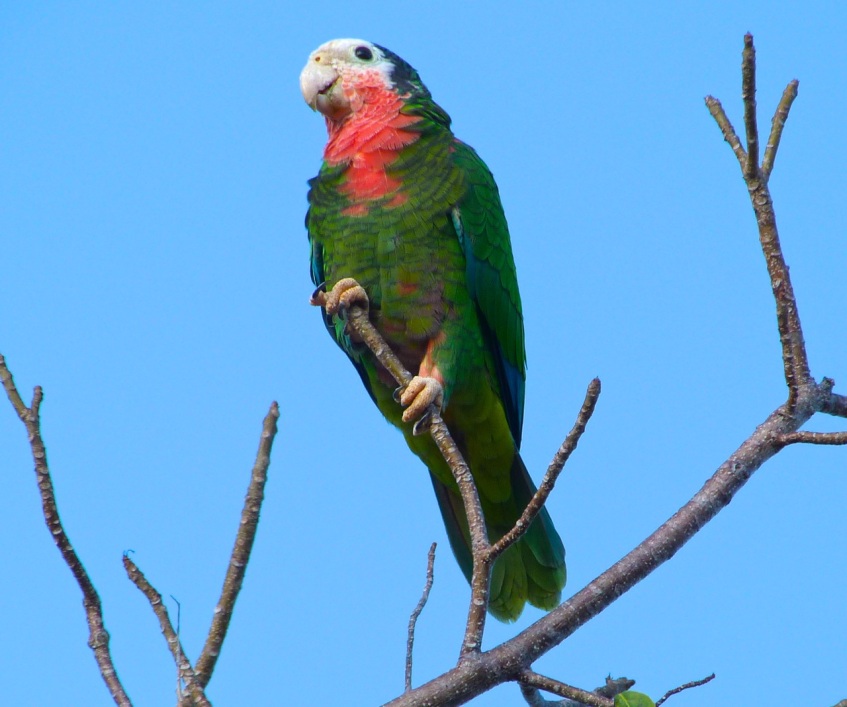
If you suspect that this one has had some ‘work’ done, you’d be right. I normally leave my photos largely alone, apart from cropping and maybe basic light balancing where needed. Sometimes an image is nearly there, but needs a bit of extra cosmetic business – but one can usually tell. The left wing? Hmmmmm (users of ‘noise reduction’ will know what I am talking about!).

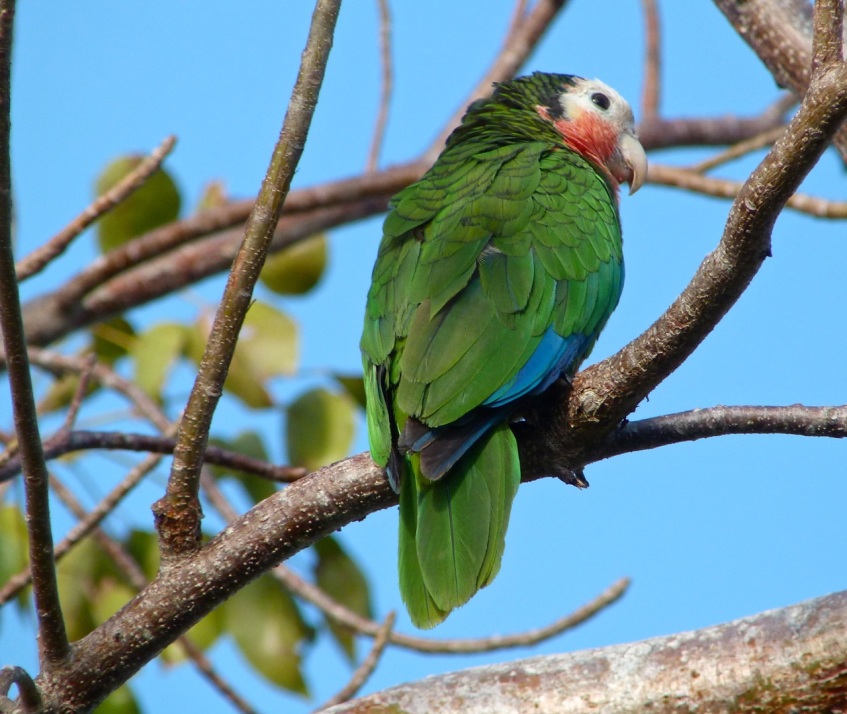
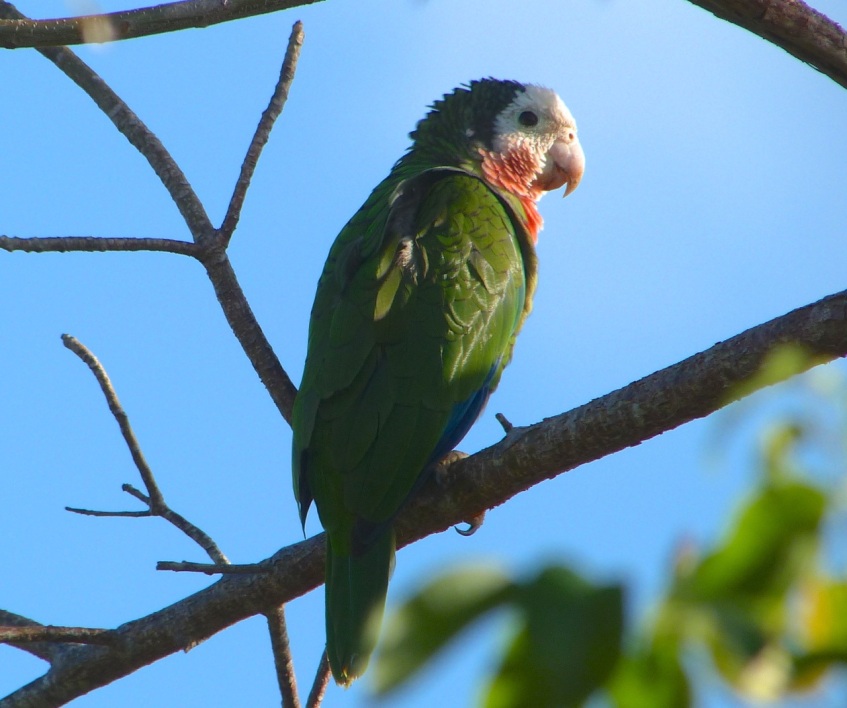
The flocks of parrots are incredibly noisy. Sometimes they split into two or three groups, close together, and seem to compete in raucousness. Around 5.00 pm seemed to be the noisiest time. I took recordings of the racket, using the voice memo app on an iPh*ne, simply holding the phone with the speaker / mike end towards the parrots. Some come out pretty well – good enough to post on the excellent XENO-CANTO bird sound site. Here is a recording, with the first few seconds transcribed into a sonogram. I made a ring tone from this recording for Caroline Stahala, the scientist who, with her team, looks after the birds. She’s been too polite to say whether she uses it or (more likely) not!
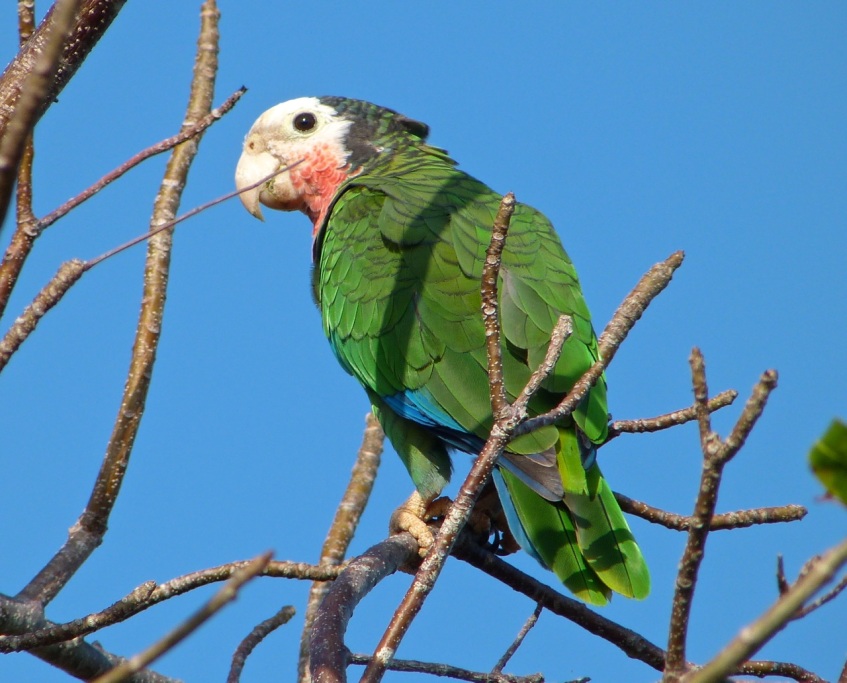

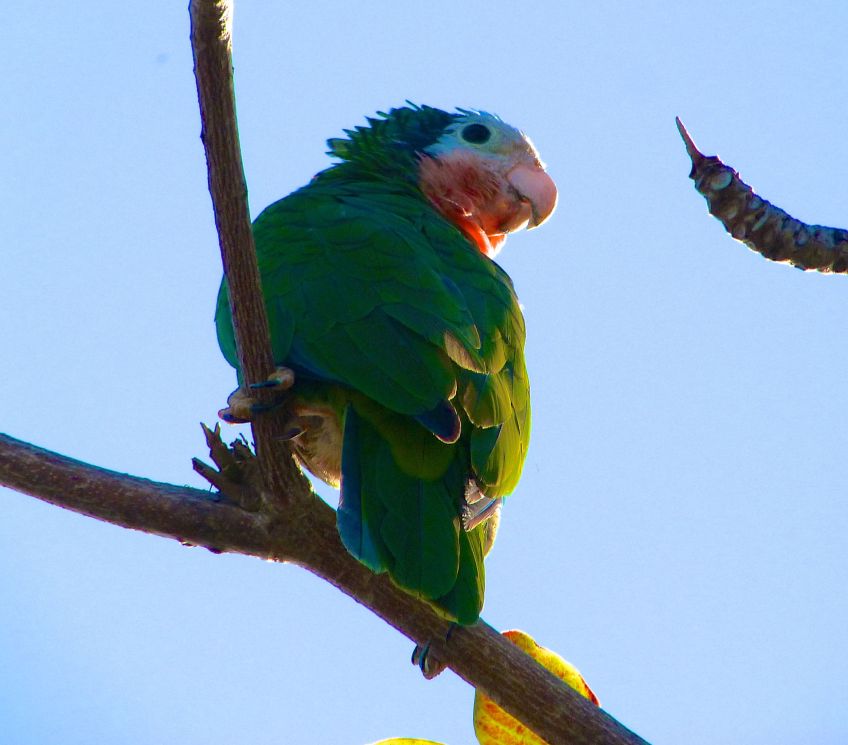 I find the parrots very hard to nail in flight (see above), possibly because of a shutter-speed issue (mine, not the camera’s). I nearly junked the picture below, but I liked the clash of the parrot colours with the purple bougainvillea, so I spared it.
I find the parrots very hard to nail in flight (see above), possibly because of a shutter-speed issue (mine, not the camera’s). I nearly junked the picture below, but I liked the clash of the parrot colours with the purple bougainvillea, so I spared it.
If anyone is interested in making a small contribution towards the continuing research into and protection of these birds, please have a look at my ABACO WILDLIFE CHARITIES page, where the relevant link to Parrots International can be found. Or visit doudoubirds, where you will find endearing Abaco Parrot prints by dou dou herself for sale in aid of the parrots. Or contact me at rollingharbour.delphi@gmail.com
If anyone had a problem with the Xeno-Canto sound file above, here is a simplified version of the recording


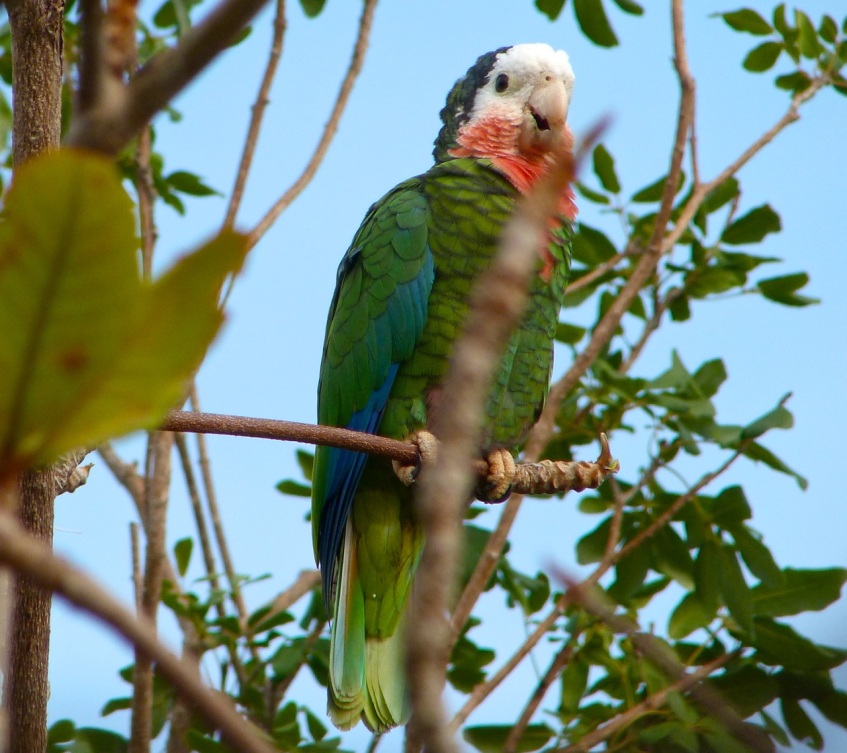




A cheerful bit of news that their population is back on the increase! Great article. I played the video and my cat went crazy looking around the house for where the squawking came from…lol. They are noisy, but adorable little birds! Take care, Kathi
LikeLike
Yes, it’s a great bit of conservation that bucks the gloomy trend. Poor cat! I’ve got a couple of other bird recordings to put up – let’s hope they will have a more soothing effect than all that screeching… RH
LikeLike
Another outstanding short documentary. Thank you! Some of the best pics capturing the blue on the wings I’ve ever seen. And the mp3 will be a wonderful addition to my 8TB music collection. Your posts are award-worthy! Thank you once again.
LikeLike
Thanks Jack. I’m well impressed by you 8TB music collection. Maybe you’d like the ringtone too! RH
LikeLike
What fantastically characterful faces!
LikeLike
Yes indeed – but what about the electric blue dots on the yellowtail? They’re the ones I’m most familiar with… and they really are like that underwater.
LikeLike
I was thinking just that… until Mrs RH looked at the close-up and remarked on the similarity between the beak and toe-nails… Generally, I think she meant, not specifically. Bathos!
LikeLike
Reblogged this on dou ♥ dou and commented:
These parrots are so friggin cute, I can’t stand it
LikeLike
Oh! Ow! You weren’t meant to feel so agonised by them. Hope people will follow the link to your A P picture… All the best, RH
LikeLike
Reblogged this on Ann Novek–With the Sky as the Ceiling and the Heart Outdoors.
LikeLike
Thanks for sharing the parrots around the blogosphere, Ann. RH
LikeLike